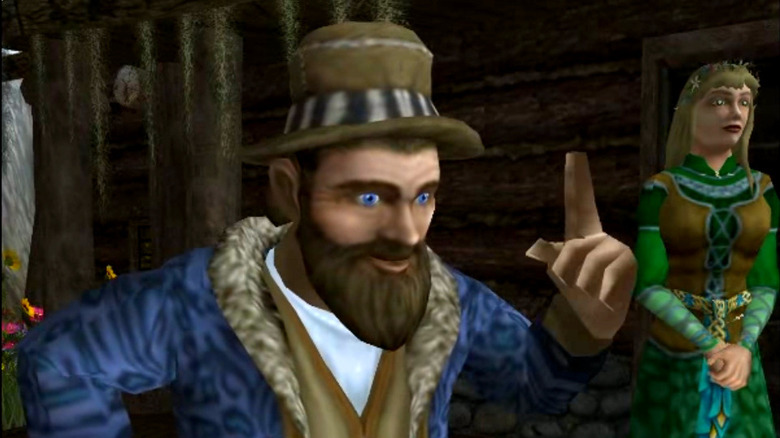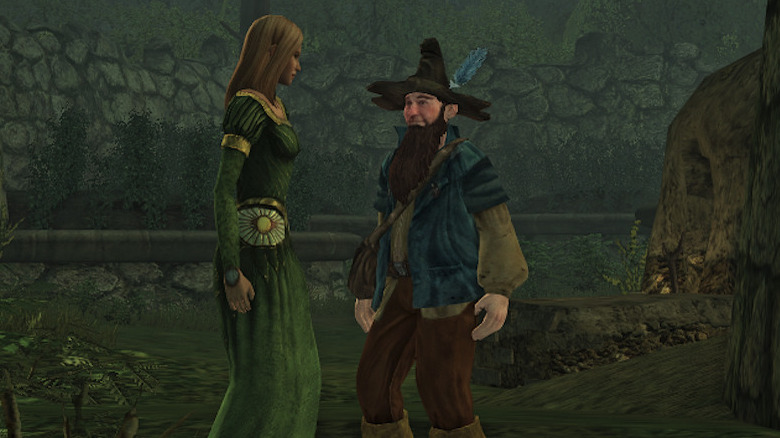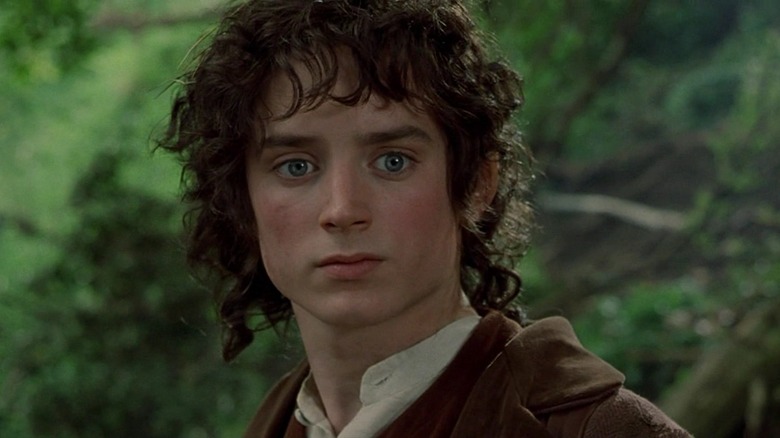Cookies help us deliver our Services. By using our Services, you agree to our use of cookies. Learn More.
Lord Of The Rings: Tom Bombadil’s Wife Goldberry, Daughter Of The River, Explained
Anyone who has read “The Lord of the Rings” knows about Tom Bombadil. The jolly, overpowered character is a mystery. J.R.R. Tolkien denied that he represented God, called Tom an intentional enigma, and freely admitted that the merry fellow wasn’t necessary to the primary story, which explains his being unceremoniously cut by Peter Jackson when he adapted it to the silver screen. Sure, there are some Jackson hints at Bombadil in a deleted scene, but that’s about it.
What many fail to remember is that when Bombadil exited the adaptation, his wife, Goldberry, left the on-screen narrative with him. Who’s Goldberry? We’re glad you asked.
Tom Bombadil’s spouse is just as enigmatic as her husband, though more down to earth in more than one way, as we’ll see in a minute. She is described as slender and small, with long yellow hair, white skin, and green attire. Beyond basic physical attributes like these, Tolkien doesn’t give us any firm description of what kind of creature Goldberry is. She’s definitely not a Hobbit, Human, Elf, or Dwarf. Instead, she is presented as a spiritual being who lives with Tom in their home away near the Withywindle River on the edge of the Old Forest near the Shire.
In “The Fellowship of the Ring” book, Tom describes their meeting, saying that he found his wife “in a wide pool, deep and clear, far down the Withywindle; there [water-lillies] open first in spring and there they linger latest. By that pool long ago I found the River-daughter, fair young Goldberry sitting in the rushes.”
The meet-cute is a bit more violent than one might expect, but we’ll get to that in a bit. First, let’s take a closer look at the kind of creature Goldberry actually is.
Goldberry represents an aspect of nature
While spiritual in nature, Goldberry doesn’t appear to be one of the Ainur (the angelic creatures who play a key other-worldly role in the building, breaking, and general history of Middle-earth). The biggest reason for this is that, like her husband, Goldberry deliberately stays out of the affairs of the world. Tom Bombadil isn’t there to help shape nature or history. Instead, he functions as a third party, observing and enjoying without actively influencing.
Goldberry echoes this role, though there is some evidence that she could be a different kind of spiritual being than her truly uncategorized husband, one that is rarely referenced and never clearly described in J.R.R. Tolkien’s world. When we first meet her, she calls herself “Goldberry, daughter of the River.” In June 1958, Tolkien expanded on this in a letter harshly criticizing a proposed film adaptation for the “Lord of the Rings” trilogy. In it, he said of the treatment of Tom Bombadil and Goldberry, “We are not in ‘fairy-land’, but in real river-lands in autumn. Goldberry represents the actual seasonal changes in such lands.”
Similarly, Tom Bombadil calls Goldberry “River-daughter” and “River-woman’s daughter.” When Frodo meets Goldberry, he quotes some of Tom Bombadil’s nonsensical singing about his wife, saying nature-centric lines like “O slender as a willow-wand! O clearer than clear water! O reed by the living pool! Fair River-daughter!” and “O spring-time and summer-time, and spring again after! O wind on the waterfall, and the leaves’ laughter.”
When Goldberry moves and talks, she also exhibits this seasonal nature spirit element. Her clothes are described as rustling “softly like the wind in the flowering borders of a river.” Her voice is referred to as “young and ancient as Spring” and is repeatedly connected to rain, rivers, and flowing water.
Goldberry was also in a Hobbit poem
One interesting thing about Goldberry’s origin is that it dates back farther than Middle-earth. The character was included in a poem called “The Adventures of Tom Bombadil.” This was published in 1934, years before “The Hobbit” was released. In what can only be described as a riotous, nonsensical bit of singsong, Tom Bombadil heads down to a river, where — get this — a mischievous sprite (read: Goldberry) pulls him right into the water under the water lilies. Bombadil proves more than she bargained for, and he commands her to set him free before returning and asking her to marry him. They even have a woodland wedding attended by animals.
When J.R.R. Tolkien officially began publishing Middle-earth material, he wove Bombadil and Goldberry into his new world. In doing so, he rearranged a few of the poem’s details, including the major adjustment of making it a Hobbit poem. In the revised preface, Tolkien explains that the poem and others like it are from the Shire, adding that they “appear to have been made by Hobbits, especially by Bilbo and his friends, or their immediate descendants.”
Okay, so Goldberry is, for all intents and purposes, a river spirit or some similarly ethereal aquatic being. She feels like an Elf but with a curious connection to mortals. “The Fellowship of the Ring” book says when Frodo meets her, “He stood as he had at times stood enchanted by fair elven-voices; but the spell that was now laid upon him was different: less keen and lofty was the delight, but deeper and nearer to mortal heart; marvelous and yet not strange.” One lingering question about her character (at least for movie-only fans) is what part she actually plays in the “Lord of the Rings” story.
In the books, Goldberry makes an impact on the hobbits who visit her
This down-to-earth river spirit has a mesmerizing effect on the hobbits who visit her house in the Old Forest. During their stay, Goldberry is depicted laughing, singing, dancing, setting the table, serving food, talking, and sitting surrounded by bowls of water filled with water lilies. She has a structured, consistent life, to the point where she has regular washing days that she observes even when she has company.
Goldberry also plays a quiet yet deep role in the story of Frodo and his quest. Both she and Tom Bombadil play a key role in safely introducing the Hobbits to the larger, stranger world they enter as they leave the Shire. Every interaction that the Hobbits have with the daughter of the River is meaningful, to the point where Frodo genuinely panics when Tom initiates the next part of their journey, only for the Hobbit to realize he didn’t say goodbye to his hostess.
Tolkien also assigns Goldberry an important (albeit undefined) role as a serious and very real representative of nature, as emphasized in his earlier quoted letter. In that same letter, after warning against a potentially poor adaptation of the character, he concludes, “Personally I think she had far better disappear than make a meaningless appearance.”
As is the case with Tom Bombadil, perhaps Goldberry is better left to the imagination rather than the screen. Kudos to Peter Jackson for making the right call on that one. That said, if the rumor mill is true, Tom Bombadil could pop up in “The Rings of Power” Season 2—and if that’s the case, perhaps we’ll get Goldberry with him. Here’s hoping creators J.D. Payne and Patrick McKay heed the author’s warnings about the River-daughter’s function in Middle-earth storytelling.





